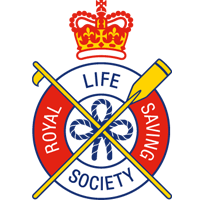If your hiring some surfboards and wetsuits, or maybe you’ve taken the plunge and bought your own surfboard and wetsuit, then you will be facing a critical question that you will need to answer….
How to Choose the Right Surf Spot for a Beginner Surfer.
There are a few things that you will need to consider before you suit up and run into the surf so here are some tips on how to make the right decision and ensure that your surf session is full of successfully completed rides to the shore and tall tales to be relayed to your mates later on.
Choosing the right location and conditions.
Firstly you need to head to a lifeguarded beach. If there is no lifeguard present at the beach then find one that is, it’s not worth the risk.
Ask for the lifeguard’s recommendations of where the best waves for beginners are. The lifeguard will point you toward the surfing zone of the beach which will be demarcated by the presence of a black and white chequered flag at each end.
The sort of conditions that are ideal for learning to surf are waist-high waves with light winds. At first you will only be going out to waist depth water so if the waves are a bit bigger than waist high it shouldn’t matter too much but if the winds are stronger than 20mph you should consider coming back when the winds are lighter. That’s not to say that it’s impossible when the winds are 20-25mph but it will make it harder. If the winds are stronger than or gusting above 25mph then leave it until the wind has died down.
A lot will depend on the topography of the beach area but as a general rule rocky foreshores are a no-go and a point or bluff will usually have a current running alongside it. Keep an eye out for discoloured water and unusually calm areas of the sea as this might indicate the presence of a rip current. You should avoid rivermouths as well – even small rivers will create a trench where no waves will break and a rip can easily form.
Making sure that you surf in the right conditions now will really improve your experience and make everything so much easier.
If in doubt ask for a lifeguards advice, they will be only too glad to help.
[themedy_columns structure=”50|50″][themedy_col position=”a”]
Surf with a Friend.
Never go surfing alone.
For obvious reasons you are far safer surfing with a friend. Keep an eye on your surfing buddy and also on other surfers. The sea can change very quickly and is totally indifferent to your wellbeing so being aware of yourself and your buddy will keep you both safe.
If you see your buddy or a fellow surfer having difficulty then first, alert the lifeguards and second – as long as you are not endangering yourself – go to their aid.[/themedy_col][themedy_col position=”b”]

[/themedy_col][/themedy_columns]So why alert the lifeguards first? Because its a lot easier to rescue one person than two.
About the lineup – where to go, how to get there, how far out should you go, where are the waves breaking?
So you’re at a safe beach, the conditions are good and you’re itching to get in.
At this point it’s time to take a few moments and look at the line-up. Make a mental note of where the waves are breaking, how often and how far out. For your first couple of surfs you should only be walking out to your waist depth but it’s still worth surveying the line up to leave nothing to chance.
Which wave to go for?
If you have consulted the lifeguard, surveyed the conditions carefully for ten minutes or so and are comfortable with the conditions then you are ready to put your leash on and head into the water.
At this stage any whitewater wave that is breaking in your waist depth of water will be absolutely fine. Literally any of them – don’t overthink it, just go!
The key thing is not to go beyond your depth and, when not standing on your surfboard, always remain with your feet in contact with the seabed.
After your surf?
So you’ve had a good surf and caught loads of waves… well done.
Afterwards make a few mental notes about the conditions. Which type of wave was powerful, which was too weak to surf on, why did some waves double up and other fizzle out to nothing? Use these mental notes to help you choose good waves in the future.
Then do it all again for your next surf.




